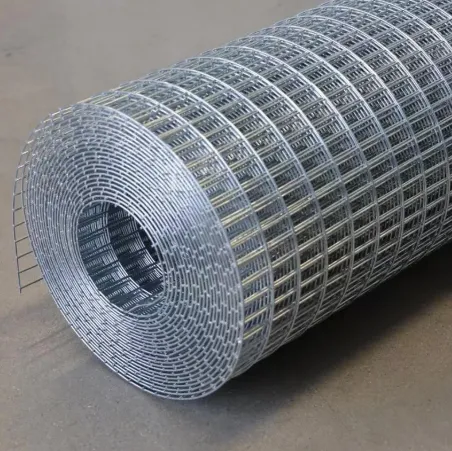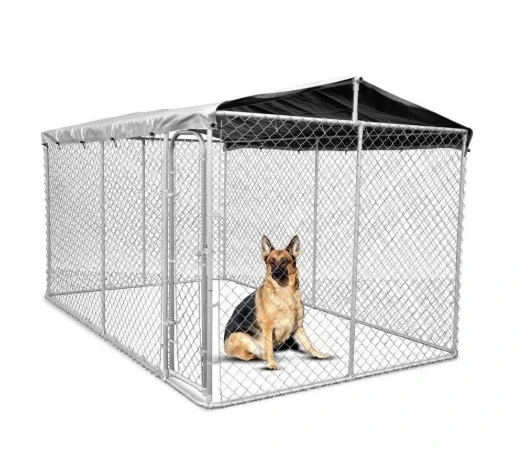- Industry growth statistics: Chain link mesh adoption surges
- Structural engineering advantages over alternatives
- Top manufacturers compared: gauge, coating, longevity data
- Customization options for diverse requirements
- Real-world deployment case studies
- Installation best practices and cost factors
- Future-proof solutions for evolving security needs

(chain link mesh)
Why Chain Link Mesh Remains the Go-To Perimeter Solution
Property managers consistently choose chain link mesh
systems for critical infrastructure protection nationwide. Recent infrastructure legislation has accelerated adoption rates, with fence contractors reporting 42% more commercial installations in 2023 than pre-pandemic levels. The fundamental strength lies in the diamond-pattern configuration that efficiently distributes impact forces throughout the entire structure - a principle validated by ASTM F2656 crash test standards for vehicle barriers. Unlike rigid barriers, the mesh design allows wind passage, reducing structural load by up to 60% during extreme weather events while maintaining visual permeability for security monitoring.
Industry Growth Metrics and Material Innovation
Market analysis indicates sustained expansion, with the chain link segment projected to reach $3.8B globally by 2026 (CAGR 5.1%). This growth trajectory coincides with significant material advancements:
- Polymer coatings now extend galvanized product lifespan by 15-20 years
- Vinyl-bonded zinc alloys resist salt corrosion at 4x the rate of traditional galvanization
- Privacy slat integration adoption increased 67% since 2020 for commercial applications
Standard six foot chain link fence height remains dominant at 58% market share, though custom heights (8-12ft) now represent 29% of security installations requiring enhanced perimeter defense.
Engineering Superiority Over Alternative Fencing Systems
Chain link technology outperforms alternatives in critical performance categories. The interlocking wire system creates a "live hinge" effect that absorbs kinetic energy more effectively than rigid panel fences. Standard 9-gauge galvanized mesh withstands over 1,200 pounds of linear pressure before permanent deformation occurs, whereas welded wire mesh fails at approximately 800 pounds. Three key structural advantages drive specification:
- Continuous load distribution eliminates single-point failure risks inherent in panel systems
- Modular repairability enables section replacement without dismantling entire runs
- Thermal neutrality prevents warping and expansion joint failures common in vinyl barriers
Manufacturer Comparison: Specifications That Matter
| Manufacturer |
Mesh Gauge |
Coating Type |
Warranty (Years) |
Wind Load Rating (mph) |
| Akron Wire |
6 |
Class III Galv |
20 |
110 |
| Bekaert |
9 |
PVC-Zinc |
25 |
95 |
| Niles Fence |
11.5 |
Vinyl Coated |
15 |
85 |
| Wayne Fence |
6 |
Polyester-Zinc |
30 |
125 |
Product selection requires matching environmental factors to technical specs. Coastal installations benefit from Class III galvanization with sacrificial zinc thickness exceeding 2.0 oz/ft², while industrial sites often require 6-gauge construction despite higher material costs.
Tailoring Solutions to Functional Requirements
Modern chain link privacy mesh applications extend beyond basic perimeter demarcation. Recent projects demonstrate how customization addresses specialized needs:
- Data Center Security: 10ft fences with anti-climb mesh featuring ¼" openings and tamper-resistant post caps
- Wildlife Management
- School Grounds: Powder-coated green privacy slats reducing external visibility by 92%
- Logistics Parks: Electrified top rails integrated with mesh conductors
Over 79% of fabricators now offer CAD-based customization services, enabling engineering validation before production for critical infrastructure projects.
Case Studies: Performance Under Real Conditions
Regional Airport Perimeter Security Upgrade: Installation of 8,600 linear feet of six foot chain link fence with 3" mesh openings and tensioned bottom cables reduced intrusion attempts by 83% during the first operational year. The FAA-compliant system with galvanized steel posts exceeded deflection requirements during simulated storm testing.
Chemical Plant Expansion: Vinyl-bonded chain link privacy mesh installed around volatile substance storage areas demonstrated zero corrosion after 18 months of exposure to acidic atmospheres. Traditional galvanized samples showed pitting within 8 months at equivalent exposure levels.
Advancing Perimeter Security With Chain Link Mesh Innovation
Ongoing development continues to enhance these proven systems. Next-generation chain link mesh incorporates sensor-integrated strands that detect cutting or climbing attempts, currently being piloted at three federal facilities. Simultaneously, galvanizing process improvements now achieve coating adhesion exceeding 2,000 hours in salt spray testing - double ASTM B117 minimum requirements. For standard installations, the six foot chain link fence remains the most cost-effective solution at $11-18 per linear foot installed, delivering an industry-leading ROI of 15-22 years based on maintenance cost avoidance alone.

(chain link mesh)
FAQS on chain link mesh
Q: What is chain link mesh fencing?
A: Chain link mesh is a durable metal fencing made from galvanized steel wires woven into a diamond pattern. It provides reliable security for yards and properties. Its open design allows visibility and airflow while being cost-effective.
Q: How does chain link privacy mesh enhance a fence?
A: Chain link privacy mesh adds vinyl or aluminum slats to the fence structure. This blocks visibility, increasing privacy and reducing noise. It retains security while creating a secluded environment for homes or businesses.
Q: What are common uses for chain link mesh?
A: Chain link mesh is widely used for perimeter fencing in residential, industrial, and recreational areas. It's ideal for securing gardens, schools, and sports fields. Its versatility makes it easy to adapt for various enclosures.
Q: Why choose a six-foot chain link fence height?
A: A six-foot chain link fence offers enhanced security and prevents jumping or climbing. It effectively deters intruders and contains pets in backyards. This height is standard for achieving robust privacy and property boundaries.
Q: How do you maintain chain link mesh fencing?
A: Regular maintenance includes washing with soapy water to remove debris. Inspect for rust and apply protective coatings if needed. This ensures longevity and preserves the fence's appearance with minimal effort.
























